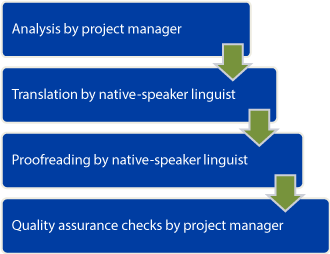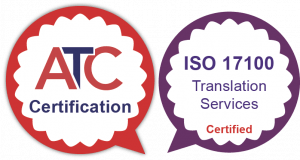Whether it is your first foray into translation and you are looking to bolster your global expansion plans, or you have been translating for years and are continuing with your multilingual global strategy, it is always worth making sure you are getting what you need from your supplier. After all, it is your reputation that is on the line if something isn’t right, and a bad choice can lead to a great increase in workload for you to get things back on track.
While the end result from vendor to vendor may be broadly similar, there are several areas for you to consider in order to find out if a particular supplier covers your needs and fits with your ethos.
- Communication
This is very much a personal aspect: while some people prefer being able to upload a document to a portal and have the translation returned to them automatically as soon as it’s ready, others like to be kept up to date by a real person who is truly managing the project from end to end.As with any relationship, even if you prefer to automate the process as much as possible, it’s always good to know that there is someone at the end of the phone (or e-mail) who isn’t just a salesperson, and who really understands what you need and how best to achieve it. That can really make the difference between a hassle-free partnership and one where you are left in the lurch as to what is going on when you really need human input.
- Standard processes and quality control: translation only, translation and non-native checking, translation and proofreading
Some LSPs will not, unless asked specifically, include checking or proofreading by a second, native speaker linguist as standard. Translation only by one professional linguist works well as a process for internal documents, and it definitely helps to keep costs down, but this will never guarantee as high a quality as having a document proofread by another person.Think of it this way: if you are happy to send someone a document which your colleague has written, but without you reading it through first, then dispensing with proofreading after the translation is complete is probably OK.Likewise, it’s also good to find out from your provider what happens once a translation has been completed and before it is delivered to you. Some companies pass the files straight back, others run spot checks on the translations, and for those more quality-oriented vendors, the files will be checked by a project manager or QA specialist before delivery.
- Who are the linguists? In-house translators? Freelancers? Students? Anyone?
Agencies work differently to companies, who work differently to individuals. Each also has a slightly different pool of resources available. Niche agencies will often have a larger database of specialised linguists in a particular subject area in addition to the generalist translators they have on their books, and their pools of translators should have at least some experience.However, it’s worth considering the level of specialism you are likely to encounter from those translators working full-time for a translation company. In these cases, a more junior translator may sometimes be assigned to your projects “just to keep them occupied”, rather than because they are best-suited for the job.Some online agencies have huge pools of translators available to them, which is ideal for rush jobs, but where project management is fulfilled by a system, work will (generally) be assigned to linguists on a first-come first-served basis, which is not always ideal, as the best translators are not usually immediately available!
- Value added services – how can the vendor help address your pain points?
Selling abroad isn’t always just about translation (although that’s often a very important part of the strategy). Marketing materials will often need to be typeset back into their original template or formatting completed (be it Photoshop, InDesign, HTML, etc.) and online UI text or apps will need to be checked in context by a linguist to make sure the end product or app works as expected.Finding a service provider who can work in the particular format you need, or provide multilingual DTP or checking services in Arabic, Chinese or Hindi can be essential to the success of your localisation projects, and save you and your internal design team hours of work.In some cases and languages, you will really need to have a local speaker working on the layout, since Western versions of many Adobe packages don’t support right to left languages out of the box!It may be that you spend hours copy-pasting, laying out or extracting text for translation – is there a way your translation vendor help you with this, or a format which you could mutually choose to adopt which might help with the exchange of information? It’s always worth discussing best practice and alternative approaches which may work in both of your favours.
To summarise, there are a number of considerations when choosing a translation vendor (beyond price, as it’s assumed that it isn’t often the main driver behind the decision in itself), and far too many to list here. The above are some which we believe are important among our client base.
We value our relationships with both clients and suppliers, and want to make sure that we are a good mutual fit in terms of how we can help each other.
If you are looking for a vendor for your translated materials, and have any questions about putting them into another language, or how we can work together to meet your multilingual needs and global ambitions, please don’t hesitate to get in touch.


